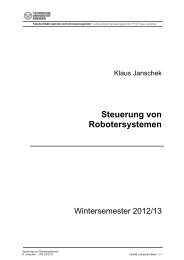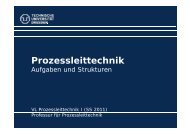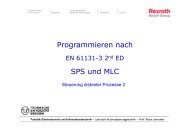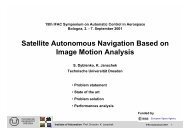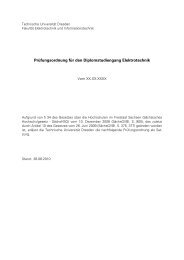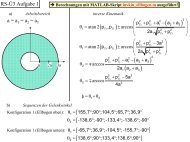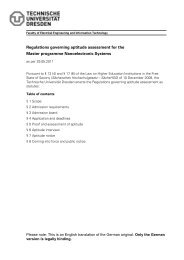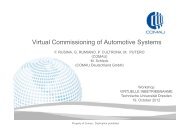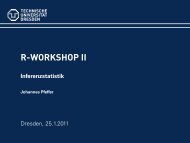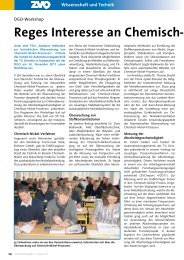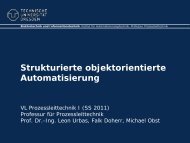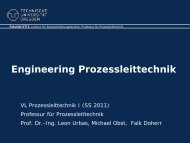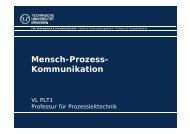the advanced concept of small satellite integrated navigation system ...
the advanced concept of small satellite integrated navigation system ...
the advanced concept of small satellite integrated navigation system ...
Create successful ePaper yourself
Turn your PDF publications into a flip-book with our unique Google optimized e-Paper software.
Ma<strong>the</strong>matical models <strong>of</strong> <strong>navigation</strong>al measurements<br />
According to <strong>the</strong> accepted simulation technique <strong>the</strong>re<br />
are <strong>the</strong> following two sorts <strong>of</strong> <strong>navigation</strong>al measurement<br />
models: <strong>the</strong> models <strong>of</strong> <strong>the</strong> «true» measurements and <strong>the</strong><br />
models <strong>of</strong> <strong>the</strong> «reference» measurements, used in <strong>the</strong><br />
«onboard» s<strong>of</strong>tware.<br />
Ma<strong>the</strong>matical models <strong>of</strong> <strong>the</strong> «true» measurements<br />
consider <strong>the</strong> following errors:<br />
• <strong>system</strong>atic errors, considered as random variables<br />
formed by corresponding first-order shaping filters:<br />
• error caused by onboard user receiver clock drift,<br />
• error, caused by ionospheric delay,<br />
• error <strong>of</strong> <strong>the</strong> pseudorange rate measurement,<br />
• error, caused by multi-path phenomenon,<br />
• random errors, considered as sequences <strong>of</strong><br />
independent Gaussian random variables with zero<br />
ma<strong>the</strong>matical expectation and fixed variances:<br />
• error caused by internal receiver noise,<br />
• error <strong>of</strong> <strong>the</strong> pseudorange rate measurement,<br />
• error, caused by internal receiver noise.<br />
Algorithms <strong>of</strong> <strong>the</strong> user position and velocity<br />
determination<br />
Two versions <strong>of</strong> <strong>the</strong> data processing algorithms can<br />
be utilized for <strong>the</strong> user position and velocity<br />
determination, namely a recursive Bayes algorithm,<br />
which is a modification <strong>of</strong> <strong>the</strong> Kalman filter, and <strong>the</strong><br />
Least Mean Square algorithm <strong>of</strong> <strong>the</strong> complete sample<br />
processing.<br />
The modification <strong>of</strong> <strong>the</strong> Kalman filtering algorithm<br />
has <strong>the</strong> following specific features. There are two cycles<br />
<strong>of</strong> algorithm operation: external and internal ones. The<br />
external cycle means enumeration <strong>of</strong> <strong>the</strong> <strong>navigation</strong><br />
sessions, and internal cycle means enumeration <strong>of</strong> <strong>the</strong><br />
observed <strong>navigation</strong>al <strong>satellite</strong>s during given <strong>navigation</strong><br />
session. Thus, <strong>navigation</strong> session is <strong>the</strong> time instant <strong>of</strong><br />
<strong>the</strong> receiving <strong>of</strong> <strong>the</strong> <strong>navigation</strong>al messages from all <strong>the</strong><br />
observed GPS and GLONASS <strong>satellite</strong>s (taking into<br />
account <strong>the</strong> restriction on <strong>the</strong> elevation).<br />
Algorithm <strong>of</strong> <strong>the</strong> TUD <strong>satellite</strong> attitude determination<br />
This Least Mean Square algorithm also has two<br />
cycles (<strong>the</strong> internal and external ones), implemented in<br />
<strong>the</strong> same way, as for determination <strong>of</strong> <strong>the</strong> user position<br />
and velocity. The difference consists in <strong>the</strong> way <strong>of</strong> <strong>the</strong><br />
observation matrix computation. In contrast to position<br />
and velocity determination LMS algorithm, here one<br />
computes <strong>the</strong> elements <strong>of</strong> <strong>the</strong> comprehensive<br />
observation matrix in respect to pitch, yaw and roll.<br />
Besides, for prediction <strong>of</strong> <strong>the</strong> Euler’s angles estimations<br />
and covariance matrix for <strong>the</strong> next <strong>navigation</strong> session,<br />
<strong>the</strong> simplified model <strong>of</strong> <strong>the</strong> TUD <strong>satellite</strong> is used.<br />
Simulation Results<br />
Input Data for Simulation<br />
The reference mission used during computer<br />
simulation <strong>of</strong> <strong>the</strong> <strong>navigation</strong>al <strong>system</strong> is based on orbital<br />
characteristics <strong>of</strong> <strong>the</strong> TUD- Satellite 6 . This <strong>small</strong> (about<br />
100 kg) <strong>satellite</strong> will be placed on a 500 km, 53 o<br />
circular orbit and will have no orbit control means. The<br />
attitude control <strong>system</strong> will be based on passive gravity<br />
gradient stabilization combined with active attitude<br />
stabilization and control using momentum wheel and<br />
magnetotorquers.<br />
The simulation interval is equal to 6000 sec; this<br />
magnitude is approximately equal to <strong>the</strong> TUD <strong>satellite</strong><br />
period <strong>of</strong> revolution. Ma<strong>the</strong>matical model <strong>of</strong> <strong>the</strong> TUD<br />
<strong>satellite</strong> angular motion corresponds to 7 .<br />
The above mentioned five versions <strong>of</strong> GLONASS and<br />
GPS constellations are considered.<br />
Errors <strong>of</strong> <strong>the</strong> TUD <strong>satellite</strong> position and velocity<br />
determination are:<br />
• for GLONASS <strong>the</strong> r.m.s. error <strong>of</strong> <strong>the</strong> TUD <strong>satellite</strong><br />
position is equal to 25 m; <strong>the</strong> r.m.s. error <strong>of</strong> its<br />
velocity is equal to 0,5 cm/sec,<br />
• for GPS <strong>the</strong> r.m.s. error <strong>of</strong> <strong>the</strong> TUD <strong>satellite</strong> position<br />
is equal to 100 m; <strong>the</strong> r.m.s. error <strong>of</strong> its velocity is<br />
equal to 50 cm/sec (taking into account GPS C/A<br />
mode <strong>of</strong> operation).<br />
Errors <strong>of</strong> carrier phase differences measurement:<br />
• <strong>the</strong> r.m.s. error <strong>of</strong> <strong>the</strong> <strong>system</strong>atic error, caused by <strong>the</strong><br />
multipath phenomenon is varied in <strong>the</strong> following<br />
way: 0.0033m, 0.005m, 0.01m, 0.033m, 0.05m;<br />
• <strong>the</strong> r.m.s. error <strong>of</strong> <strong>the</strong> additive random noise is equal<br />
to 0.005m.<br />
Description <strong>of</strong> Simulation Results<br />
During <strong>the</strong> simulation <strong>of</strong> <strong>the</strong> user attitude<br />
determination process using GLONASS/GPS receiver,<br />
<strong>the</strong> influence <strong>of</strong> <strong>the</strong> following factors has been<br />
explored:<br />
• various completeness <strong>of</strong> GLONASS and GPS<br />
<strong>navigation</strong> <strong>satellite</strong>s constellation, namely: GLONASS<br />
only, GPS only, GLONASS+GPS, incomplete<br />
GLONASS only, incomplete GLONASS+GPS;<br />
• different length <strong>of</strong> <strong>satellite</strong> antennae <strong>system</strong> base;<br />
• different level <strong>of</strong> <strong>system</strong>atic errors.



